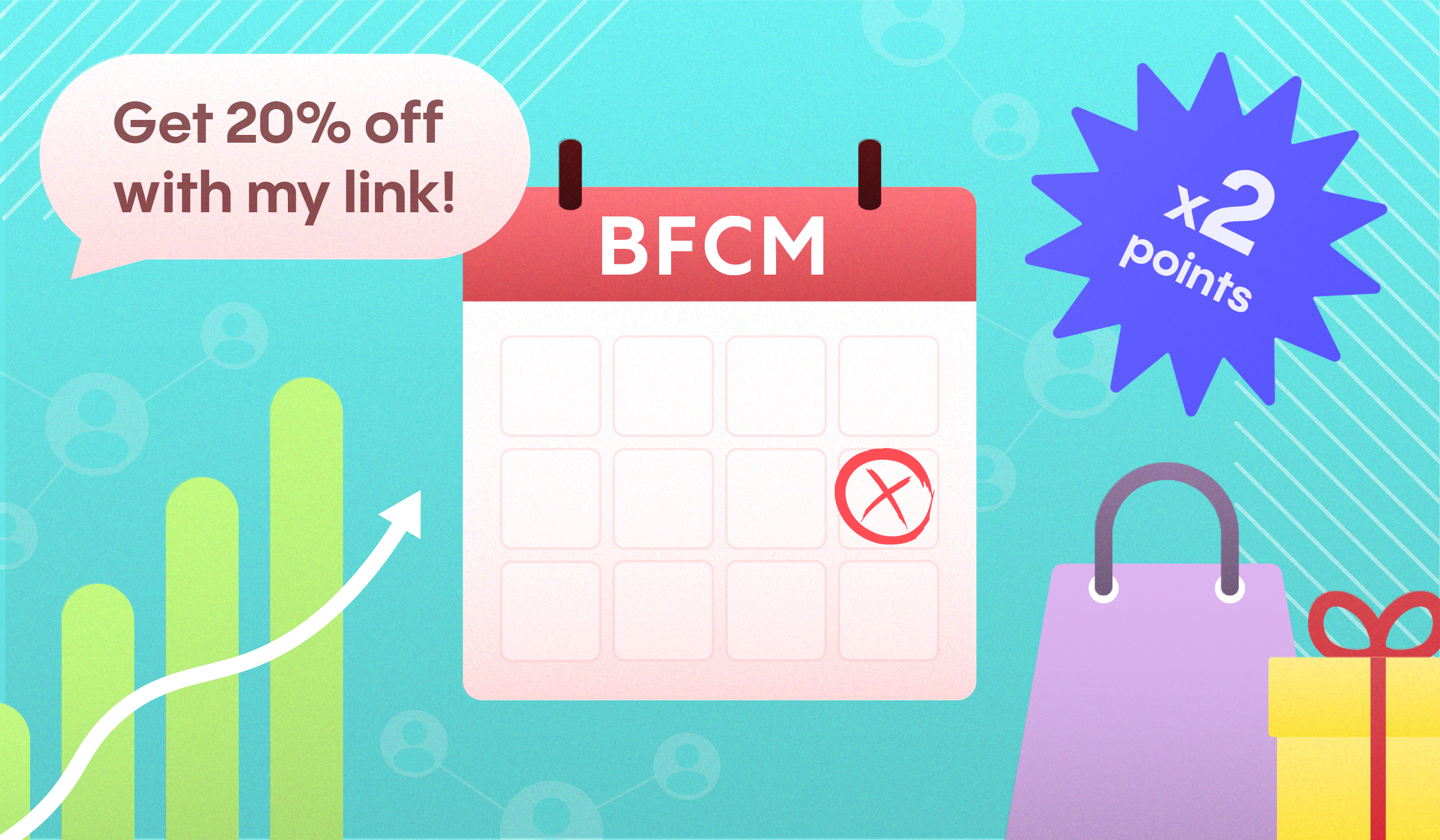Building brand loyalty is essential for long-term success. A loyal customer base drives consistent revenue without as much marketing spend.
Loyal customers also serve as a powerful marketing tool through word-of-mouth recommendations and positive reviews.
But how do you build brand loyalty? In this comprehensive guide, we'll explore proven strategies and actionable tips on how to build brand loyalty that keep customers coming back for more.
Understanding Brand Loyalty
Before diving into the strategies to improve brand loyalty, let's first clarify what brand loyalty is and why it matters.
What is Brand Loyalty?
Brand loyalty is the deep emotional connection and unwavering commitment that customers have towards a particular brand or product. Loyal customers consistently choose a specific brand over competitors, even when other options are available. They trust the brand, advocate for it, and remain loyal over an extended period.
Why Does Brand Loyalty Matter?
Brand loyal customers help ensure continued success for your business. Here are some of the ways brand loyalists are good for your company.
- Sustained Revenue: Loyal customers are more likely to make repeat purchases, increasing their customer lifetime value to your business. Just a 5 percent increase in customer retention can increase your profits by 25 percent. The more brand loyal customers you have, the higher your monthly revenue.
- Cost Efficiency: Acquiring new customers is typically more expensive (25x more expensive) in marketing costs than retaining existing ones. Creating loyal customers saves your business money.
- Resilience to Competition: Over 70 percent of consumers worldwide have switched to a new brand in the last year. Brands with strong loyalty are less susceptible to losing existing customers due to competitive pressures and market fluctuations.
- Increased Market Reach: Loyal customers become brand advocates, promoting your products or services to their network through organic word-of-mouth marketing. Fifty percent of customers will recommend a brand to friends and family simply because they like the brand. This is especially true when there is an incentive to do so, like with a loyalty program.
Strategies To Build Brand Loyalty
Now that we understand the importance of brand loyalty, let's explore how to build it.
1. Deliver Exceptional Customer Experiences
One of the foundational pillars of brand loyalty is providing exceptional customer experiences. Every interaction a customer has with your brand should be seamless, pleasant, and memorable. Here's how to achieve that.
%2520(2).png)
- Personalization: Tailor your interactions to individual customer preferences and needs. Use customer data to personalize interactions at every touchpoint. Address customers by name, track their preferences, and make recommendations based on their past behavior. Personalization shows customers that you value them as individuals, not just as transactions.
- Responsive Support: Offer timely and helpful customer support to address concerns and inquiries promptly. Equip your customer service representatives with the tools and authority they need to solve problems quickly and effectively. When customers feel heard and supported, their trust in your brand grows.
- Consistency: Maintain a consistent brand image, messaging, and quality across all touchpoints, whether online, in-store, or over the phone. Consistency makes your brand more recognizable and reliable, providing a cohesive customer experience.
- Feedback Integration: Listen to customer feedback and use it to improve your products and services continuously. Regularly ask for customer feedback about product quality, customer service, and any other touchpoints in the buying journey and act on it. When customers see that their opinions can lead to real changes, they feel a part of your brand's community.
- Invest in a User-Friendly Website and Mobile Experience: A smooth online experience is expected from your customers. The likelihood of a customer bouncing from your website increases by 32% for every 1 to 3 seconds it takes to load. Make sure your website and mobile platforms are intuitive, fast, and easy to navigate.
2. Build Trust and Credibility
Trust is the bedrock of brand loyalty. Consumers are more likely to remain loyal to brands they trust. Here are a few ways to build trust and credibility.

- Transparency: Be open and honest in your business practices, from pricing to data usage. Clear communication and owning up to mistakes can significantly enhance trust. Customers appreciate a brand that acts with integrity and is straightforward about its operations.
- Quality Assurance: By delivering products and services that consistently meet or exceed expectations, satisfied customers see you affirm your commitment to excellence. Use customer feedback as a tool for continuous improvement, ensuring that quality is always at the forefront.
- Social Proof: Display customer reviews and testimonials to showcase the positive experiences of others. Showcasing real stories and endorsements can also be a way to highlight a new product, draw attention to a new way products can be used, or demonstrate other benefits of the product.
- Security: Ensure the security of customer data and transactions to build trust in your brand's reliability. Implementing advanced security measures and being proactive about data protection can set your brand apart and deepen customer trust.
3. Create a Strong Brand Identity
Your brand's identity should resonate with your target audience and differentiate you from competitors. A compelling brand identity includes.
- Unique Value Proposition (UVP): Clearly communicate what sets your brand apart and why customers should choose you. Articulate your UVP by pinpointing the specific benefits your products or services offer. For example, Saalt consistently mentions that its “leakproof underwear keeps you (magically) dry.” Make this statement prominent in your marketing materials to immediately inform potential customers why they should engage with your brand.

- Visual Branding: Your visual branding should be instantly recognizable. Develop a distinctive logo, color scheme, and design elements that are consistent across your website, packaging, and marketing channels to create a cohesive visual experience that customers will remember.
- Storytelling: Craft a compelling brand story that connects emotionally with your audience. Weave a narrative that embodies your brand values and mission. Create content that tells your brand's story, such as origin stories or customer success stories, to build an emotional connection with your audience. ILIA Beauty tells Sasha’s story about how she founded ILIA, sharing the meaningful purpose behind the brand.

- Brand Voice: Establish a brand voice that reflects your brand's personality, whether it's friendly, professional, or quirky. Consistently use this voice in all marketing communications, from social media posts to customer service interactions, to reinforce your brand's character. Brands like Ryanair and DiGiorno Pizza are excellent, and hilarious, examples of maintaining a playful voice across all communication channels.
4. Offer Incentives and Rewards
Rewarding customer loyalty can strengthen their bond with your brand. Consider creating loyalty rewards programs, discounts, or exclusive offers.
.png)
- Loyalty Programs: Loyalty programs reward customer loyalty, creating brand loyalists simply by offering discounts, products, or exclusive experiences in exchange. A loyalty program defines which customer actions to reward, such as referring a friend or spending a certain amount per order. For example, a tiered rewards program where customers achieve different levels of rewards based on their spending can encourage more frequent purchases and larger order values.
- Exclusive Access: Reward loyal customers by offering them early access to sales, new product launches, or exclusive events. This not only makes them feel valued but also increases the likelihood of word-of-mouth promotion.
- Personalized Discounts: Provide discounts or promotions tailored to individual customer preferences. Use customer data to offer personalized discounts on items they frequently purchase or show interest in. For instance, sending a birthday month coupon or a special offer on an item they’ve been eyeing can make the shopping experience feel more individualized and thoughtful.
5. Engage with Your Audience
Engaging with your audience on a regular basis fosters a sense of community and belonging. Here are ways to achieve this.
- Social Media Engagement: Interact with customers on social platforms, responding to comments and messages. Create a two-way conversation on your social media channels by promptly responding to comments, sharing user posts, and hosting live Q&A sessions. For instance, use Instagram Stories' polls and questions feature to interact in real-time, showing customers that their voices are heard and valued.
- Email Marketing: Send personalized emails with relevant content, updates, and offers. Segment your email list and send tailored content that resonates with different groups. For example, send loyalty program members exclusive early access to sales, or provide useful content like how-to guides that relate to past purchases, making each email feel personal and relevant.
- User-Generated Content: Encourage customers to create and share content related to your brand. Inspire customers to share their experiences with your brand through contests or hashtags. For example, invite them to post pictures with your product using a branded hashtag for a chance to be featured on your official channels, turning existing customers into brand ambassadors.
- Surveys and Feedback: Collect input from customers to demonstrate that their opinions matter. Implement regular surveys and actively request feedback after purchases or interactions. Use tools like Net Promoter Scores (NPS) to gauge satisfaction, and follow up with personalized responses to show customers that their feedback leads to real changes.
6. Consistently Deliver Value
To build brand loyalty, consistently provide value beyond the initial purchase.
- Educational Content: Share informative content, tutorials, and guides that help customers make the most of your products or services. Create and distribute educational content like how-to videos, user guides, and webinars that empower customers to fully utilize your products. For instance, if you're a software company, offer a series of webinars that help users understand new features.
- Updates and Improvements: Continuously update and improve your offerings based on customer feedback and evolving needs. Keep your products or services fresh and relevant by rolling out updates that reflect customer feedback and current trends. A company with a mobile app, for example, could release regular updates that introduce user-requested features or enhance the user interface.
- Solve Problems: Address customer pain points and challenges through innovative solutions. This could be as simple as a clothing brand providing a stain removal guide for their apparel or as complex as a redesign, like Saalt’s new menstrual disc in response to customer feedback about the hard-to-use menstrual cup.
7. Foster Emotional Connections
Emotional branding transcends functional attributes, focusing instead on emotional benefits and experiences linked to a product or service. This approach not only fosters brand loyalty but also encourages advocacy and increases customer lifetime value.
Why? Because people make decisions based on their emotions, not the information presented to them. In fact, emotional advertising leads to about twice as much profit than rational advertising without any emotions.
Key strategies include storytelling to create deep connections, personalization to show understanding and value, and creating sensory experiences to enhance promotional impact. Targeting specific emotions like joy, excitement, trust, and nostalgia in promotions, and the importance of authenticity and shared values in building emotional brand loyalty.
Natural Dog Company, for example, taps into the love-filled emotions that come with pet ownership. Rather than highlighting the ingredients or potential results from using the product, the brand simply touches on the “peace of mind” that comes with putting your dog first.

8. Provide Excellent Post-Purchase Support
Don't overlook the importance of post-purchase support in building loyalty.
- Efficient Returns and Exchanges: Make the return and exchange process easy and hassle-free. Streamline your returns and exchanges with a simple online process, clear instructions, and prepaid shipping labels. For example, offer a "no questions asked" return policy within a 30-day window, and ensure that exchanges can be processed with just a few clicks.
- Educational Resources: Offer guides, FAQs, and tutorials to help customers make the most of their purchases. Supply your customers with comprehensive resources such as video tutorials for product setup, detailed user guides, and a robust FAQ section. For instance, create a series of easy-to-follow video guides for new product features or a garment care guide for recently purchased clothing items.
- Timely Updates: Inform customers about order status, shipping, and delivery. Communicate proactively with customers about their order's journey. Utilize email or text notifications to provide real-time updates on order processing, shipping, and expected delivery dates. Implementing a tracking system that allows customers to see the status of their order in real-time can significantly enhance customer satisfaction.
Measuring Brand Loyalty
To assess the effectiveness of your brand loyalty efforts, it's important to measure and track relevant loyalty metrics.
Here are some key indicators to keep an eye on:
- Customer Retention Rate: To gauge retention, track the percentage of customers who return to make additional purchases within a specific period. For example, if you had 100 customers at the start of the year and 80 of them made another purchase by year-end, your retention rate is 80%.
- Net Promoter Score (NPS): Survey customers to gauge their likelihood to recommend your brand to others. NPS is determined by asking customers how likely they are to recommend your brand on a scale of 0 to 10. Categorize responses into Promoters (9-10), Passives (7-8), and Detractors (0-6), then subtract the percentage of Detractors from Promoters to find your score.
- Customer Satisfaction (CSAT) Score: Measure overall customer satisfaction with your products or services. Measure CSAT by asking customers to rate their satisfaction with your product or service soon after purchase. Use a scale (e.g., 1 to 5) to quantify satisfaction levels and calculate the average to understand overall contentment.
- Repeat Purchase Rate: Determine how frequently customers make repeat purchases. Analyze sales data to identify customers who purchase more than once within a given timeframe. If you have 100 sales and 30 are from repeat customers, your repeat purchase rate is 30%.
- Referral Rate: To find your referral rate, track the number of new customers acquired through referrals from loyal customers. Implement referral codes or tracking links to measure this metric accurately. If 10 out of every 100 new customers were referred, your referral rate is 10%.
Ideally, these metrics are increasing over time.
Conclusion
Building brand loyalty is a continuous process that requires dedication, consistency, and a deep understanding of your audience. By delivering exceptional experiences, fostering trust, offering incentives, engaging with your audience, and consistently providing value, you can create a loyal customer base that not only drives revenue but also advocates for your brand. Remember that brand loyalty is not just about transactions; it's about being a brand that your customers actually want to stick with.
Ready to increase your customer loyalty? Contact Friendbuy to see if our loyalty program software or referral program software is right for you.









.avif)

